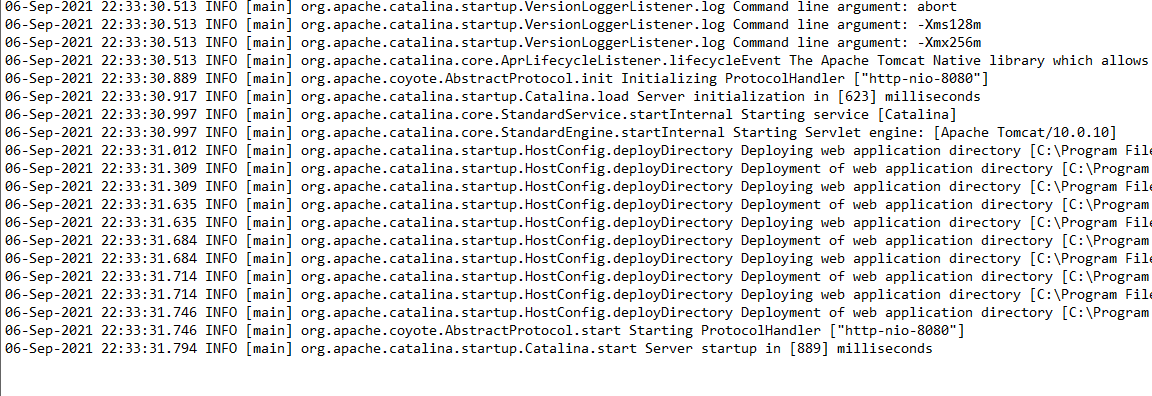
A proxy server refers to a computer network that routes requests and returns the response. Each device on the internet is assigned an IP address. This identifies it within a network. Without this address computers cannot communicate with each others. The IP address also contains additional information about a user.
Proxy servers can be used as a web firewall.
A proxy server is a type of web firewall that can be configured to redirect traffic in order to protect an organization's network. It can send requests to an outside network, block websites from accessing its internal network, and it can even block websites that attempt to access the company's internal network. A proxy server can be a powerful tool for protecting a network against hackers and viruses. These systems can also be used to filter content for an organization.
These systems are far more sophisticated than traditional firewalls that filter packets. They require more computing resources. However, they offer higher security, and offer detailed control over how applications are accessed on the system.

They keep the content in a cache
Proxy servers cache content for a variety of reasons. One reason for proxy servers is to speed up websites. Proxy servers offer many advantages. A good proxy server will cache objects with a longer TTL than the average, and it will do so during peak times. The cached object can be shared with multiple users, without the need for them to redownload from the original source.
Clients can retrieve the data in the cache of a proxy server when they request pages. Clients get the cached data back much faster than requests to the destination servers. Moreover, because the data is cached locally, the proxy server uses much less bandwidth than the destination server.
They can translate webpage content into the native language of the client
A proxy server is an effective way to localize websites in different languages. These servers connect to the client's source website and route traffic to their destination. The translated content is stored in translation memory and either machine or human translation takes place in real time. When the translated content reaches the second web server, it recreates the structure of the site in the local language.
The process of translating websites can be greatly simplified by using a website proxy. It reduces the need to hire a localization specialist, and allows translators to focus on the content instead of on the site's design. It also prevents bottlenecks and puts linguists in control of the process. A proxy does not require multilingual CMS use, so development costs are lower.

They can enhance network performance
A proxy server is a way to increase network performance. It caches URLs and web pages. Caching can reduce bandwidth consumption by speeding up the process of fetching a site on the original server. Caching makes web browsing more efficient by reducing the number of requests to other servers.
As more people use the internet and sites, the traffic volume on networks also increases. This could lead to massive overloads on proxy servers. This can cause data packet loss and slow down the internet's speed. You can reduce the effects of overload by using proxy.
FAQ
Does A Good Portfolio Make Me More Likely To Be Hired As A Web Developer?
Yes. You must have a portfolio to be considered for a job in web development or design. Portfolios should showcase examples of your skillsets and experience.
Portfolios typically include examples of past projects. These could be any project that showcases your talents. Portfolios should contain everything, from wireframes, mockups, logos and brochures to websites, apps, and websites.
Can I make my website using HTML and CSS?
Yes! If you've read this far, you should now know how to create a website.
You now know how to build a website structure. Now you need to learn HTML and CSS coding.
HTML stands for HyperText Markup Language. Think of it like writing a recipe for a dish. It would list the ingredients, directions, and how to do it. HTML is a way to tell a computer which parts are bold, underlined, italicized or linked to other parts of the document. It is the language of documents.
CSS stands for Cascading Stylesheets. Think of it like a style sheet for recipes. Instead of listing each ingredient or instruction, you will write down the general rules for font sizes and spacing.
HTML tells the browser how a page should look; CSS tells it what to do.
If you don't understand either of those terms, don't fret. Follow these steps to make beautiful websites.
What is a UI Designer?
Designers of user interfaces (UI) are responsible for creating interfaces for software products. They are responsible for the design of the layout and visual elements in an application. Sometimes, the UI designer might also include graphic artists.
The UI Designer should be able to identify problems and solve them.
A UI designer needs to be passionate about software and technology. He/she must understand all aspects of the field, from developing ideas to implementing those ideas into code.
They should have the ability to design using various techniques and tools. They should be creative thinkers and be able to solve problems using innovative solutions.
They should be organized and detail-oriented. They should be able develop prototypes quickly, efficiently and accurately.
They should be comfortable working alongside clients large and small. They must be capable and willing to adapt to new situations and environments.
They must be able communicate with others effectively. They should be capable of communicating clearly and concisely.
They should be well-rounded people with strong communication skills.
They should be motivated and driven.
They should be passionate about what they do.
Statistics
- Studies show that 77% of satisfied customers will recommend your business or service to a friend after having a positive experience. (wix.com)
- Is your web design optimized for mobile? Over 50% of internet users browse websites using a mobile device. (wix.com)
- It's estimated that in 2022, over 2.14 billion people will purchase goods and services online. (wix.com)
- At this point, it's important to note that just because a web trend is current, it doesn't mean it's necessarily right for you.48% of people cite design as the most important factor of a website, (websitebuilderexpert.com)
- When choosing your website color scheme, a general rule is to limit yourself to three shades: one primary color (60% of the mix), one secondary color (30%), and one accent color (10%). (wix.com)
External Links
How To
What is website hosting?
Website hosting refers simply to the place that people visit when they visit a website. There are two types of website hosting:
-
Shared hosting is the cheapest. Your website files reside on a server owned by someone else. Customers visit your website and send their requests over the Internet to this server. You then receive the request from the owner of the server.
-
Dedicated hosting - This is the most expensive option. Your website will reside on a single server. You and your traffic are protected by the fact that no other websites share server space.
Because it is less expensive than dedicated hosting, shared hosting is preferred by many businesses. When you use shared hosting, the company that hosts the server gives you the resources to run your site.
However, both have their advantages and disadvantages. Here are the differences:
Shared Hosting Pros:
-
Lower Cost
-
Simple to Setup
-
Frequent Updates
-
It is possible to find it on many web hosting companies
You can get shared hosting for as low as $10 per monthly. But keep in mind that this price usually includes bandwidth. Bandwidth refers the data that you can transfer over the Internet. Even if you are only uploading photos to your blog site, high data transfer rates can still cost you extra.
You'll soon realize why your old host cost so much once you get started. Many shared hosts offer very little customer support. Although they will help you set up your site occasionally, you are on your own once you have done that.
Look for a provider who offers 24/7 phone support. They'll take care of any issues that come up while you sleep.
Cons of dedicated hosting
-
More Expensive
-
Less is More
-
Requires special skills
With dedicated hosting, all you need to maintain your website are provided. You won't have to worry about whether you're using enough bandwidth or whether you've got enough RAM (random access memory).
This means that you'll spend a bit more upfront. However, once your business goes online, you'll discover that you don’t need as much technical support. You will become an expert in managing your servers.
Which Is Better for My Business?
This depends on the kind of website that you want. Shared hosting is best for those who only need to sell products. It is simple to set up and easy to maintain. Because you share a server, you will most likely receive frequent updates.
If you are looking to create a community around your brand, dedicated hosting is the best option. You can focus on building your brand without worrying about handling your traffic.
Bluehost.com is a web host that offers both. Bluehost.com offers unlimited monthly data transfers, 24/7 customer support, domain registrations free of charge, and a 30-day guarantee for your money back.